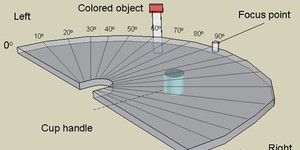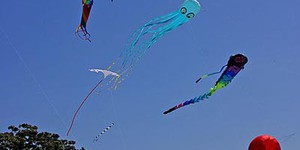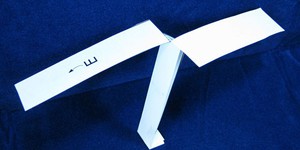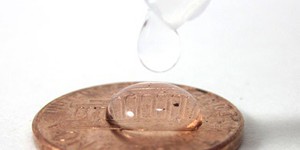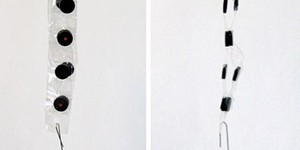Others Like “Experiment with Parachutes” (top 20 results)
|
Naval fighter pilots seem to defy physics each time they fly their jets off of an aircraft carrier. Normal runways are thousands of feet long so that airplanes can develop enough lift to fly. But a runway on an aircraft is much shorter. How can naval pilots get their fighter jets into the air without falling off the carrier into the ocean? Well, because they get a boost from a catapult! Sounds unbelievable? It's not, and you can find out more about catapult-assisted takeoff in this aerodynamics…
Read more
Peripheral vision is important in our everyday lives because it allows us to gather a visual sense of our surroundings—without it, we would see the world through "tunnel vision." The survival of our ancient ancestors depended on their ability to use peripheral vision to find prey and to avoid predators. Almost everything we do—from riding a bike, to dribbling a basketball, to reading a book—depends on peripheral vision. In this human biology science fair project, you will test…
Read more
Kites have been a source of entertainment for centuries for kids from cultures around the world. In this science project you will have a chance to build your very own kite, a simple sled kite. Then you will use it to investigate how kites fly. Will you find out the best way to fly your kite?
Read more
Watching professional racing-car drivers compete can be thrilling. The high speeds that racing cars can reach — up to 200 miles per hour (mph) and more! — put some unique demands on the vehicles. For example, to withstand high temperatures, the tires must be inflated with nitrogen gas, instead of air as with normal car tires. This enables the drivers to have better control over steering their cars as they race around the track. In this sports science project, you will inflate…
Read more
Have you ever seen a helicopter flying through the sky? It can be difficult to do a science project with a real helicopter, so in this project we will show you how to make a miniature paper helicopter called a whirlybird. Will your whirlybird be able to stay in the air as you add paper clips as weights? Try this project to find out!
Read more
Did you know that cosmetics companies employ teams of specialized scientists to develop and test each new line of makeup, perfume, lotion, or soap? This science project lets you be the cosmetics scientist. You will create your own lip balm right in your kitchen using a short list of ingredients, then test it, and follow up with some creative cosmetics science of your own!
Read more
Did you know that even though water is a liquid, it isn't always able to get into little cracks and crevices? So how do clothes go from caked with mud to clean? How can dishes go from greasy to glistening? With a few simple household items, you can find out!
Read more
How do scientists "copy" DNA? They use a process called the Polymerase Chain Reaction, or PCR. The key to making this process work is having a short piece of DNA, called a primer, that will stick to the larger piece of DNA you want to copy, called a template. In this science project, you will test how the number of matches and mismatches in a primer will affect its ability to stick, or anneal, to the DNA template during PCR.
Read more
Have you ever looked up into the sky and seen not a bird, not a plane, but a hot-air balloon? They are definitely amazing and fun to watch! Do you think they are all the same size? Does size affect how long the hot-air balloon can fly? In this science fair project, you will launch hot-air balloons, powered by a toaster, and see how the size of the balloon affects its flight.
Read more
Sometimes, simple toys can be quite complicated. Take the yo-yo. It's a fun toy and there is nothing simpler than a string wrapped between two connected disks. But there's a lot of physics that makes a yo-yo work. In this science fair project, learn more about how and why a yo-yo works. You will investigate the effect of string length on the yo-yo's "sleep" trick time. If people ask why you've got a yo-yo with you all the time, tell them that while it looks like you're just having fun, you're…
Read more
|
Explore Our Science Videos
The Impossible Arrow Illusion
Is the Egg Raw or Cooked? STEM activity
Build a Mini Trebuchet




